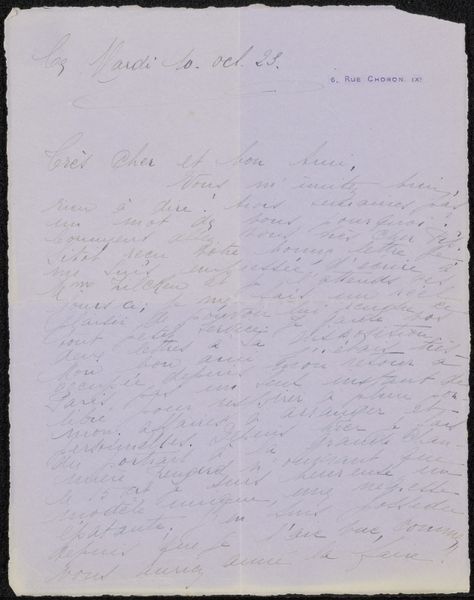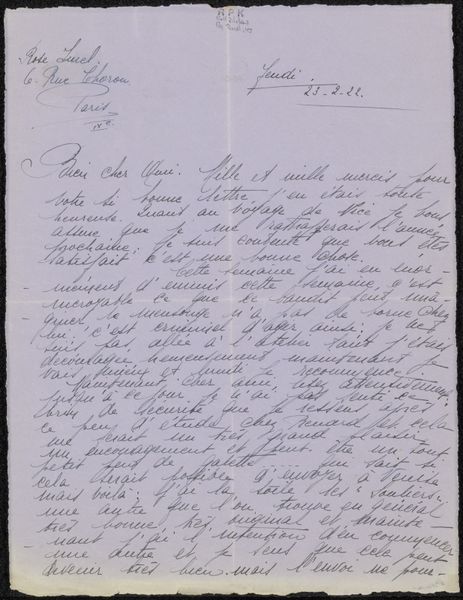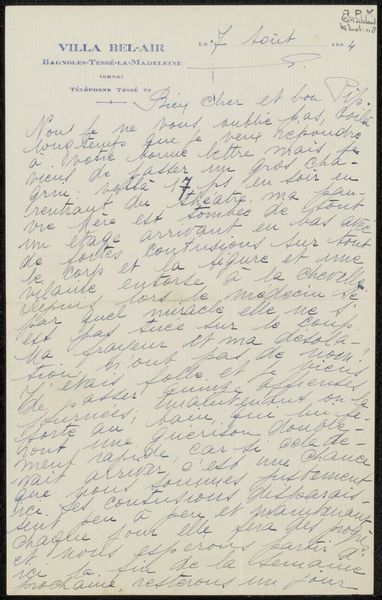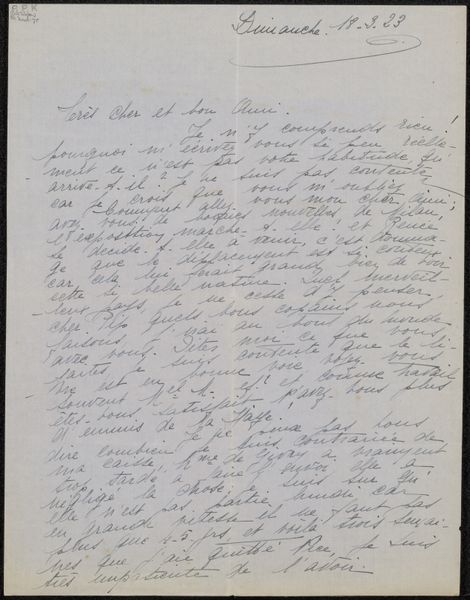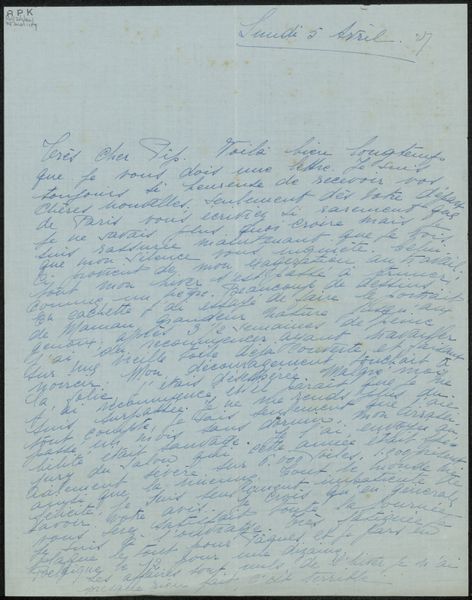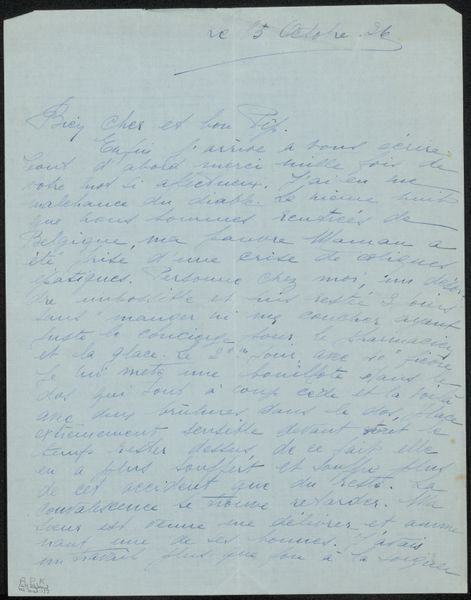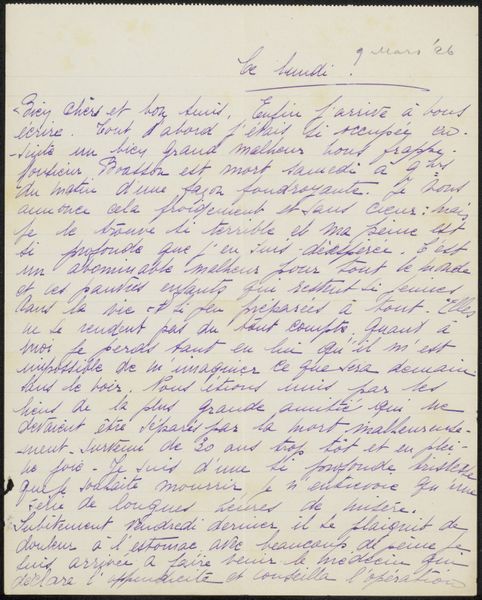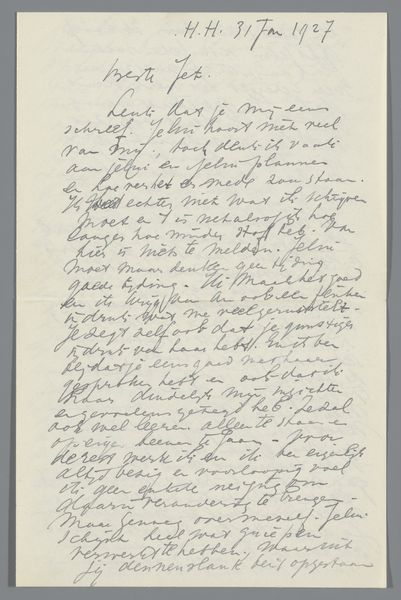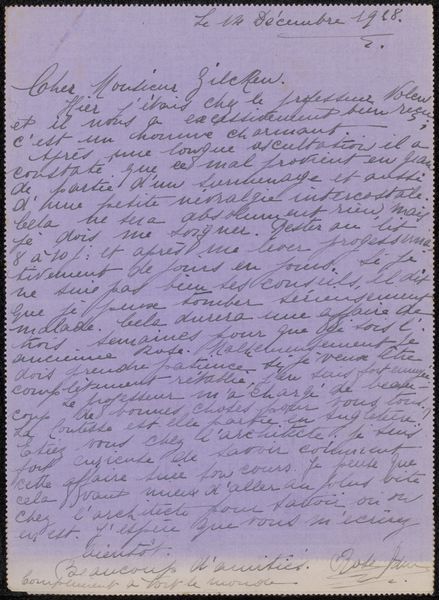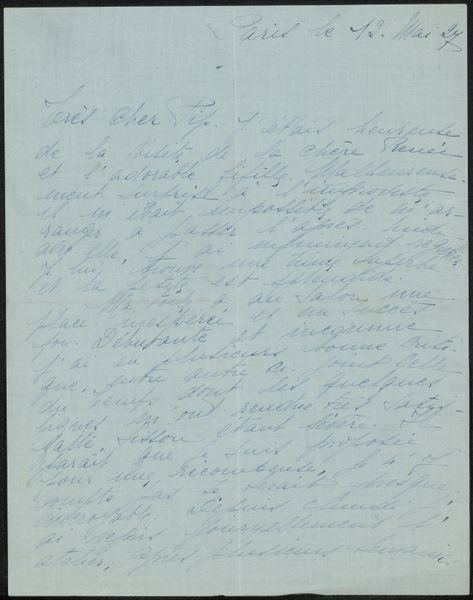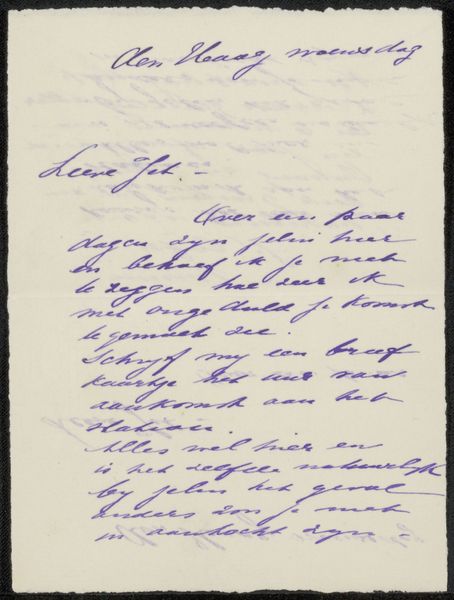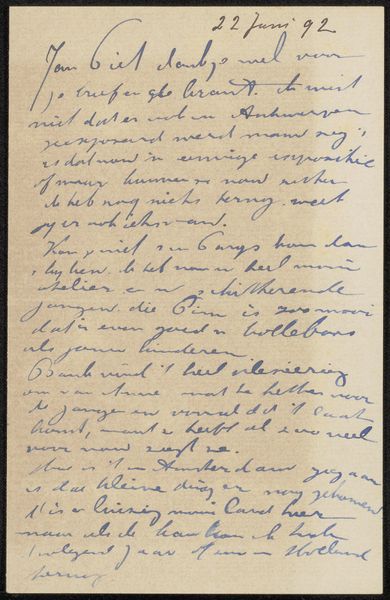
drawing, paper, ink
#
drawing
#
paper
#
ink
#
calligraphy
Copyright: Rijks Museum: Open Domain
Curator: This work, "Brief aan Philip Zilcken," possibly from 1923, is a drawing in ink on paper. The intimate scale and personal nature of the handwriting suggest a direct connection to the artist's everyday life and concerns. What strikes you about its presentation? Editor: Well, initially it looks like… a letter. The flowing script gives it a sense of immediacy, almost as if we're looking over someone's shoulder reading their mail. How would you interpret it? Curator: From a materialist perspective, I'm interested in the act of writing itself. Consider the cost and availability of paper and ink in the early 20th century, and the skill required for such beautiful, consistent penmanship. Writing was a physical process then, involving labor, materials, and a particular set of social relations between writer and recipient. Does the calligraphy shift how you view it? Editor: Yes, viewing it through that lens does. The letter wasn't just a means of conveying information; it's evidence of a specific craft, a material exchange, and a relationship, not just between the sender and recipient, but involving specific writing tools and practices that have largely become obsolete today. I wonder if this adds or removes importance from the words within the drawing, versus the aesthetic properties on display. Curator: Precisely. The content becomes secondary to the means of production. We're not simply reading a message; we're examining a material object shaped by labor, skill, and social context. Editor: I see your point. Focusing on the materials and methods brings out a richer understanding than simply considering it an historical note. Curator: Exactly! It lets us reconsider our assumptions of artistic worth by examining objects commonly found in life. Editor: Thank you. That perspective changes my understanding of how we might value seemingly commonplace things.
Comments
No comments
Be the first to comment and join the conversation on the ultimate creative platform.

